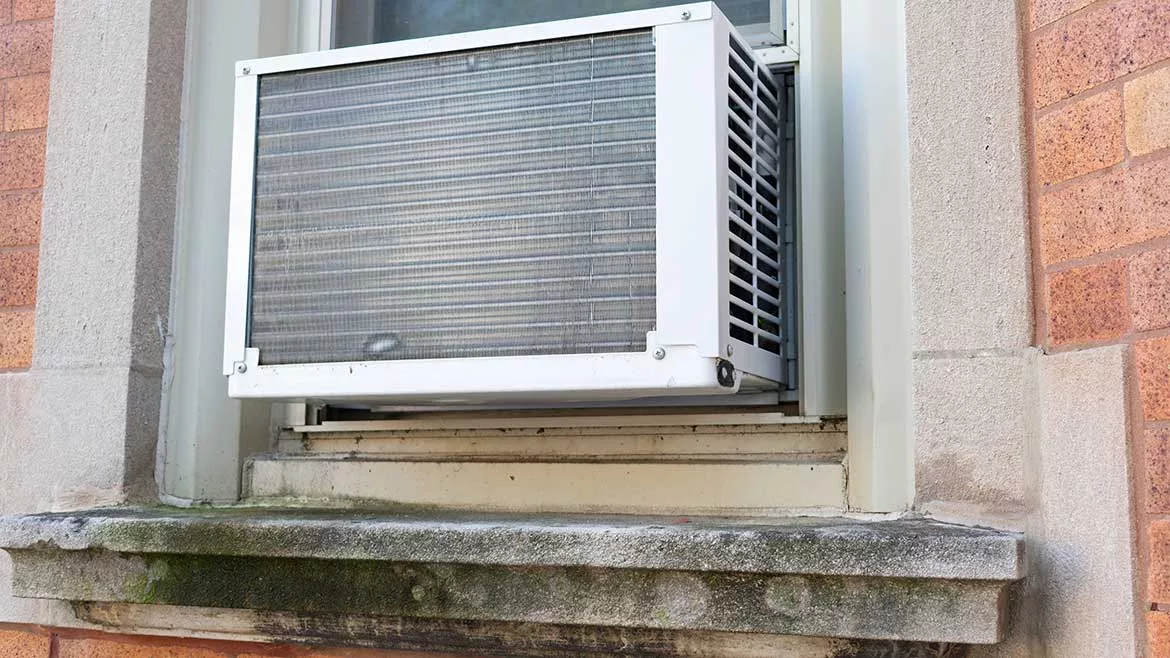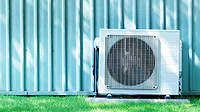Contractor's Corner | Dave Yates
Air conditioning firsts
Heat wave brings back memories.

Image courtesy of James Andrews / iStock / Getty Images Plus
The recent heat wave brought back childhood memories of growing up without air conditioning and how amazing it was to finally have heavier-than-a-tank window units my father would wrestle into each window, accompanied with swearing, in 1958! I can recall our very first TV, which was kept in the cool basement before AC moved into our home. We would gather around the TV to watch, as a family, and often carried our dinners down into the basement when the outdoor weather temperatures made being anywhere else in the home uncomfortable. Lying in bed with a fan blowing on us to keep from drowning in a pool of our own sweat!
The behemoth window unit in my bedroom had square vent outlets that could be pulled out and turned to direct air in a single direction. I would turn them all to blow directly on my bed, which was glorious. Mom read, or heard, somewhere that having the AC blow directly on you was going to make us sick — so began the vent wars with Mom changing the air direction and me changing it back.
We were one of the first families to host foreign exchange students in 1959 in our area and I was moved to the basement so our guest from Japan could use my bedroom. A lot of food firsts during that time because our Japanese exchange student loved to cook native dishes for our family.
There was another first that became a foul odor in my bedroom, which we all assumed was our exchange student’s dirty stockings or other clothing items. After he returned to Japan, we were surprised to find the odor did not dissipate but grew steadily worse. It turned out to be the wet filter that had become soaked which caused some incredibly stinky growth all over its surfaces. The filter was changed and the odor disappeared. Made me wonder what kinds of stories the exchange student must have told upon his return to Japan! If I knew then what I, and you, know now, that filter would have been suspect and changed long before it finally was.
In 1964, after Mom had several back operations, they had an addition added on the first floor with a master suite and our first exposure to central AC. The most remarkable difference was how quiet the system was compared to the window units. I was fascinated by the installation and our plumber let me tag along to “assist” in the installation. Many years later, I would have the opportunity to return that favor. One family, in particular, stands out because their autistic son would get excited and shout “plumber” when excitingly greeting me. His parents told me this was very unusual for their son who was normally frightened by anyone other than immediate family members.
When Nana came to live with my parents, we introduced another first to their early 1800s vintage home. During one early remodeling project, they discovered a log wall with an old window still intact. Eventually, Nana could no longer negotiate stairways, so the first-floor living room was converted into a bedroom. There was no AC in this part of the first floor, and given the construction with just a seven-foot head clearance in the basement, central AC with ductwork was ruled out. The perfect solution was a floor console inverter mini-split heat pump and that also allowed Nana to have the additional heat she craved in cold winter months.
Eventually, as is the natural order of things, Nana and my parents passed and new owners moved in. During my parents’ later years, we purchased some of their land and built a home next door to help enable them to remain in their home. The new neighbors who bought their home were getting married, and, on the day of their wedding and reception, called in a panic because the mini-split quit working. That marked the first, but not last, time we discovered snakes electrocuted inside control panels! Pretty stinky too. They wiped out the control board too, but our supplier had one in stock. Cue the “Here Comes the Bride” music!
Many of us witnessed the air conditioning transition from expensive luxury to a standard commodity and the transition from fix-it-when-you-have-time to I need it fixed yesterday! I swear customers are more panicked about losing their AC today than they are if the heat needs repaired.
You might be surprised to know that H. H. Schultz and J. Q. Sherman filed the first patent for a window AC unit in 1931. Their units hit the market in 1932, but the high cost made them a luxury item. Also, in 1931 Frigidaire began marketing central AC systems for the residential market. Prior to 1931, Carrier had developed and installed comfort cooling for movie theaters and auditoriums where the general public flocked to venues to enjoy the comfort conditioning. Carrier also designed smaller systems that could be utilized for residential cooling in 1931. However, the prohibitive cost ensured central AC was a high-dollar luxury item. An engineer, Henry Gibson, developed a compact less expensive window AC unit and sold 43,000 of them in 1947. The race was on to become the Henry Ford of air conditioning!
The late 1960s saw most new homes incorporating AC. Nearly 100 million American homes, 87% of all homes, now had either central air conditioning or window AC units. Many of us witnessed the air conditioning transition from expensive luxury to a standard commodity and the transition from fix-it-when-you-have-time to I need it fixed yesterday! I swear customers are more panicked about losing their AC today than they are if the heat needs repaired. We also were there to witness the first Energy Department’s Appliance and Equipment Standards Program mandating minimum efficiency standards in response to the energy crisis in the 1970s. What an amazing march forward in increased operating efficiencies we have seen over the decades. Many manufacturers’ efficiencies far exceed the government’s minimum standards, and the tax incentives and utility rebates often help convince customers to upgrade without experiencing sticker shock. Heat waves like this recent blast of heat can be life threatening for customers, especially ones with underlying health issues.
Let’s not forget the need to protect the health and safety of the hard-working men and women who service, repair and install HVAC equipment. Limit times in overly hot spaces and know the signs of heat exhaustion.
Meanwhile Congress and OSHA are working on legislation to mandate heat protection for both indoor and outdoor workers. They expect this to be finalized over the next two years and then become a new ruling employers will have to follow.
Looking for a reprint of this article?
From high-res PDFs to custom plaques, order your copy today!









